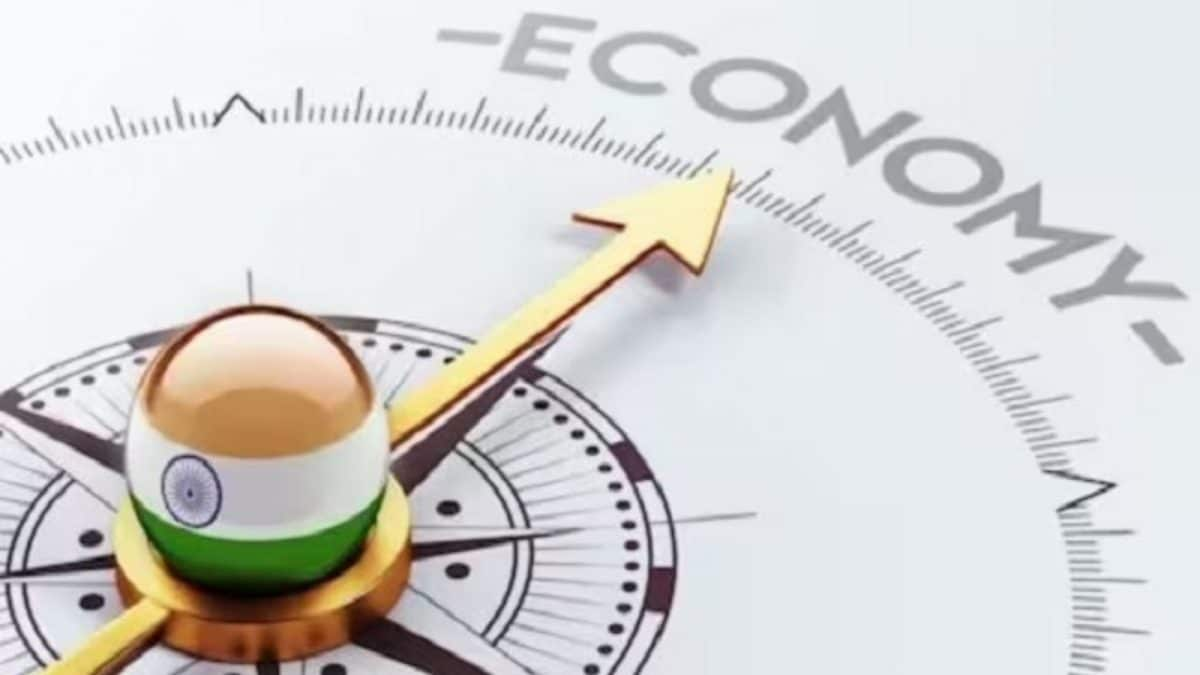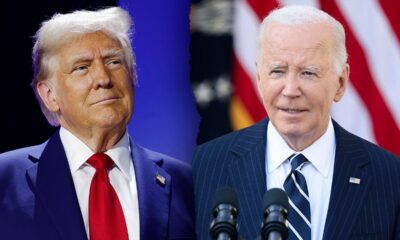Business
‘Exhili-Rating’ For India: How S&P Upgrade Strengthens Negotiating Power In Trade Talks

Last Updated:
The agency has raised India’s long-term unsolicited sovereign credit ratings to ‘BBB’ from ‘BBB-‘, and its short-term ratings to ‘A-2’ from ‘A-3’

This is seen as a significant acknowledgement of India’s growth story, especially given the cynicism within the Congress and Rahul Gandhi endorsing American President Donald Trump’s comment that India was a dead economy.
Representational image
The mood is upbeat with the S&P rating system upgrading India. They have raised India’s long-term unsolicited sovereign credit ratings to “BBB” from “BBB-“, and its short-term ratings to “A-2″ from “A-3″. The outlook on the long-term rating is stable. This is seen as a significant acknowledgement of India’s growth story, especially given the cynicism within the Congress and Rahul Gandhi endorsing American President Donald Trump’s comment that India was a dead economy.
The global ratings agency stated, “The stable outlook reflects our view that continued policy stability and high infrastructure investment will support India’s long-term growth prospects. That, along with cautious fiscal and monetary policy that moderates the government’s elevated debt and interest burden, will underpin the rating over the next 24 months.”
This is significant considering the uncertainty over the Indian market and trade, given the face-off between India and the US. There is concern that high tariffs could impact India’s economy. However, the agency acknowledged these apprehensions and said, “Though the U.S. is India’s largest trading partner, we do not expect the 50% tariffs (if imposed) to pose a material drag on growth. India’s exports to the U.S. constitute about 2% of GDP. Factoring in sectoral exemptions on pharmaceuticals and consumer electronics, the exposure of Indian exports subjected to tariffs is lower at 1.2% of GDP. Though this may eventually result in a one-off hit to growth, we envisage the overall impact to be marginal and will not derail India’s long-term growth prospects.”
The Indian government has been appreciated for its political stability. The agency mentioned that with the BJP having a majority in Parliament, the formulation of laws and schemes becomes easier. It has predicted a GDP growth of about 6.5%. Many government schemes and initiatives by Prime Minister Narendra Modi, like Jan Dhan, push to MSMEs, Ayushman Bharat, to name a few, have helped the economy.
Additionally, the commerce ministry has released data showing that this quarter alone, trade has increased in many critical sectors like gems, mechanical goods, and auto parts. While there is concern about trade ties between the US and India, the ministry remains hopeful. The ministry stated, “Commerce ministry—negotiations with US are ongoing… talks are on… BTA talks are engaged… the US is an important trade partner for us just as we are for them.”
These ratings are also important as India is poised to sign several bilateral trade agreements with other countries. A good rating will give India more power to negotiate.

Pallavi Ghosh has covered politics and Parliament for 15 years, and has reported extensively on Congress, UPA-I and UPA-II, and has now included the Finance Ministry and Niti Aayog in her reportage. She has als…Read More
Pallavi Ghosh has covered politics and Parliament for 15 years, and has reported extensively on Congress, UPA-I and UPA-II, and has now included the Finance Ministry and Niti Aayog in her reportage. She has als… Read More
view comments
Read More
Business
Peel Hunt cheers ‘positive steps’ in Budget to boost London market and investing

UK investment bank Peel Hunt has given some support to under-pressure Chancellor Rachel Reeves over last week’s Budget as it said efforts to boost the London market and invest in UK companies were “positive steps”.
Peel Hunt welcomed moves announced in the Budget, such as the stamp duty exemption for shares bought in newly listed firms on the London market and changes to Isa investing.
It comes as Ms Reeves has been forced to defend herself against claims she misled voters by talking up the scale of the fiscal challenge in the run-up to last week’s Budget, in which she announced £26 billion worth of tax rises.
Peel Hunt said: “Following a prolonged period of pre-Budget speculation, businesses and investors now have greater clarity from which they can start to plan.
“The key measures were generally well received by markets, particularly the creation of additional headroom against the Chancellor’s fiscal rules.
“Initiatives such as a stamp duty holiday on initial public offerings (IPOs) and adjustments to the Isa framework are intended to support UK capital markets and encourage investment in British companies.
“These developments, alongside the Entrepreneurship in the UK paper published simultaneously, represent positive steps toward enhancing the UK’s attractiveness for growth businesses and long-term investors.”
Ms Reeves last week announced a three-year stamp duty holiday on shares bought in new UK flotations as part of a raft of measures to boost investment in UK shares.
She also unveiled a change to the individual savings account (Isa) limit that lowers the cash element to £12,000 with the remaining £8,000 now redirected into stocks and shares.
But the Chancellor also revealed an unexpected increase in dividend tax, rising by 2% for basic and higher rate taxpayers next year, which experts have warned “undermines the drive to increase investing in Britain”.
Peel Hunt said the London IPO market had begun to revive in the autumn, although listings activity remained low during its first half to the end of September.
Firms that have listed in London over recent months include The Beauty Tech Group, small business lender Shawbrook and tinned tuna firm Princes.
Peel Hunt added that deal activity had “continued at pace” throughout its first half, with 60 transactions announced across the market during that time and 10 active bids for FTSE 350 companies, as at the end of September.
Half-year results for Peel Hunt showed pre-tax profits jumped to £11.5 million in the six months to September 30, up from £1.2 million a year earlier, as revenues lifted 38.3%.
Peel Hunt said its workforce has been cut by nearly 10% since the end of March under an ongoing savings drive, with full-year underlying fixed costs down by around £5 million.
Steven Fine, chief executive of Peel Hunt, said: “The second half has started strongly, with the group continuing to play leading roles across both mergers and acquisitions and equity capital markets mandates.”
Business
Gross GST collections for November stand at over Rs 1.70 lakh crore; up 0.7 per cent – The Times of India

GST collections: The Gross Goods and Services Tax (GST) collections for the month of November came in at over Rs 1.70 lakh crore. This is a rise of 0.7%, according to official data.SBI Research in a report in November had estimated that the gross domestic GST collections may come around Rs 1.49 lakh crore for November 25 (returns of October 25 but filed in Nov’25), a YoY growth of 6.8%.“Coupled with Rs 51,000 crore of IGST and cess on Import, the November GST collections thus could cross Rs 2.0 lakh crore, driven by the peak festive season demand led by lower GST rate and increased compliance while most of states experience positive gains,” SBI Research had said.This story is being updated
Business
Key Financial Deadlines That Have Been Extended For December 2025; Know The Last Date

New Delhi: Several crucial deadlines have been extended in December 2025, including ITR for tax audit cases, ITR filing and PAN and Aadhaar linking. These deadlines will be crucial in ensuring that your financial affairs operate smoothly in the months ahead.
Here is a quick rundown of the important deadlines for December to help you stay compliant and avoid last-minute hassles.
ITR deadline for tax audit cases
The Central Board of Direct Taxes has extended the due date of furnishing of return of income under sub-Section (1) of Section 139 of the Act for the Assessment Year 2025-26 which is October 31, 2025 in the case of assessees referred in clause (a) of Explanation 2 to sub-Section (1) of Section 139 of the Act, to December 10, 2025.
Belated ITR filing deadline
A belated ITR filing happens when an ITR is submitted after the original due date which is permitted by Section 139(4) of the Income Tax Act. Filing a belated return helps you meet your tax obligations, but it involves penalties. You can only file a belated return for FY 2024–25 until December 31, 2025. However, there will be a late fee and interest charged.
PAN and Aadhaar linking deadline
The Income Tax Department has extended the deadline to link their PAN with Aadhaar card to December 31, 2025 for anyone who acquired their PAN using an Aadhaar enrolment ID before October 1, 2024. If you miss this deadline your PAN will become inoperative which will have an impact on your banking transactions, income tax return filing and other financial investments.
-

 Sports1 week ago
Sports1 week agoWATCH: Ronaldo scores spectacular bicycle kick
-

 Entertainment1 week ago
Entertainment1 week agoWelcome to Derry’ episode 5 delivers shocking twist
-

 Politics1 week ago
Politics1 week agoWashington and Kyiv Stress Any Peace Deal Must Fully Respect Ukraine’s Sovereignty
-

 Business1 week ago
Business1 week agoKey economic data and trends that will shape Rachel Reeves’ Budget
-

 Tech6 days ago
Tech6 days agoWake Up—the Best Black Friday Mattress Sales Are Here
-

 Politics1 week ago
Politics1 week ago53,000 Sikhs vote in Ottawa Khalistan Referendum amid Carney-Modi trade talks scrutiny
-

 Fashion1 week ago
Fashion1 week agoCanada’s Lululemon unveils team Canada kit for Milano Cortina 2026
-

 Tech6 days ago
Tech6 days agoThe Alienware Aurora Gaming Desktop Punches Above Its Weight












